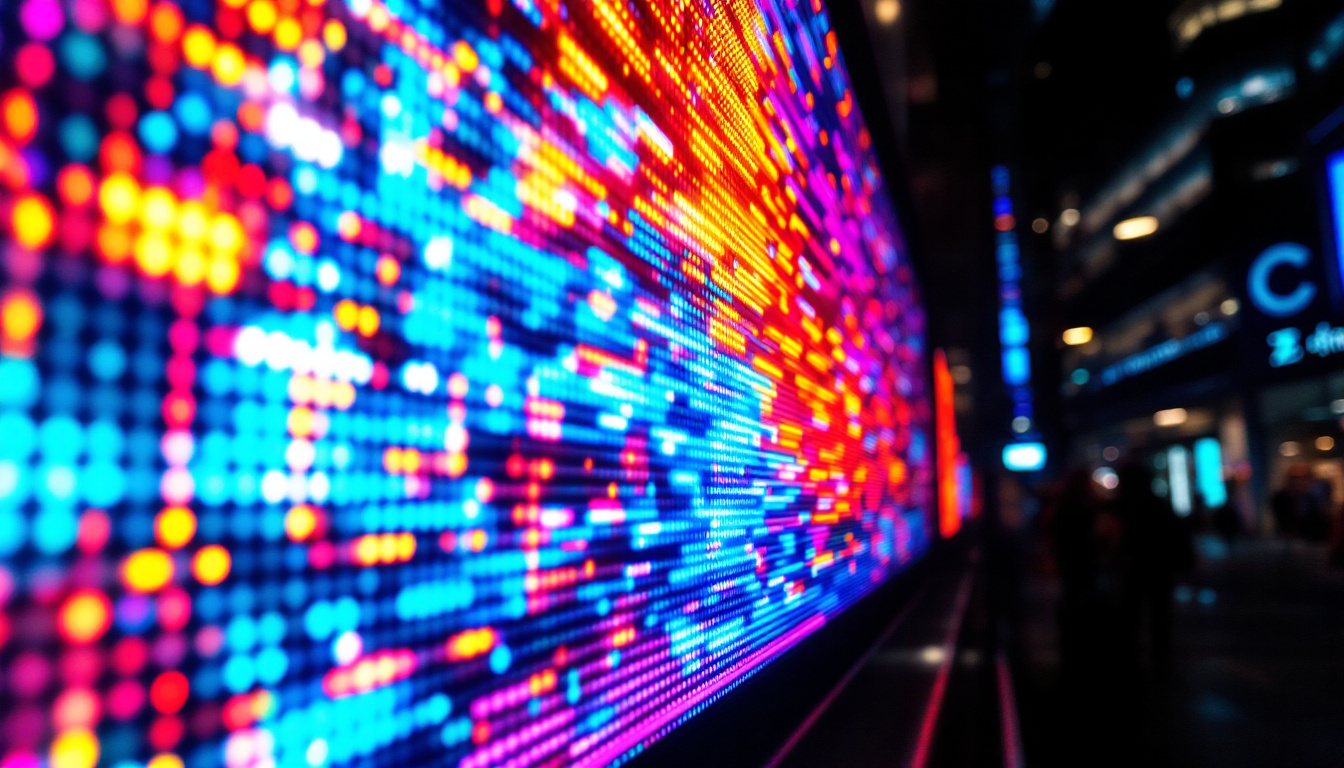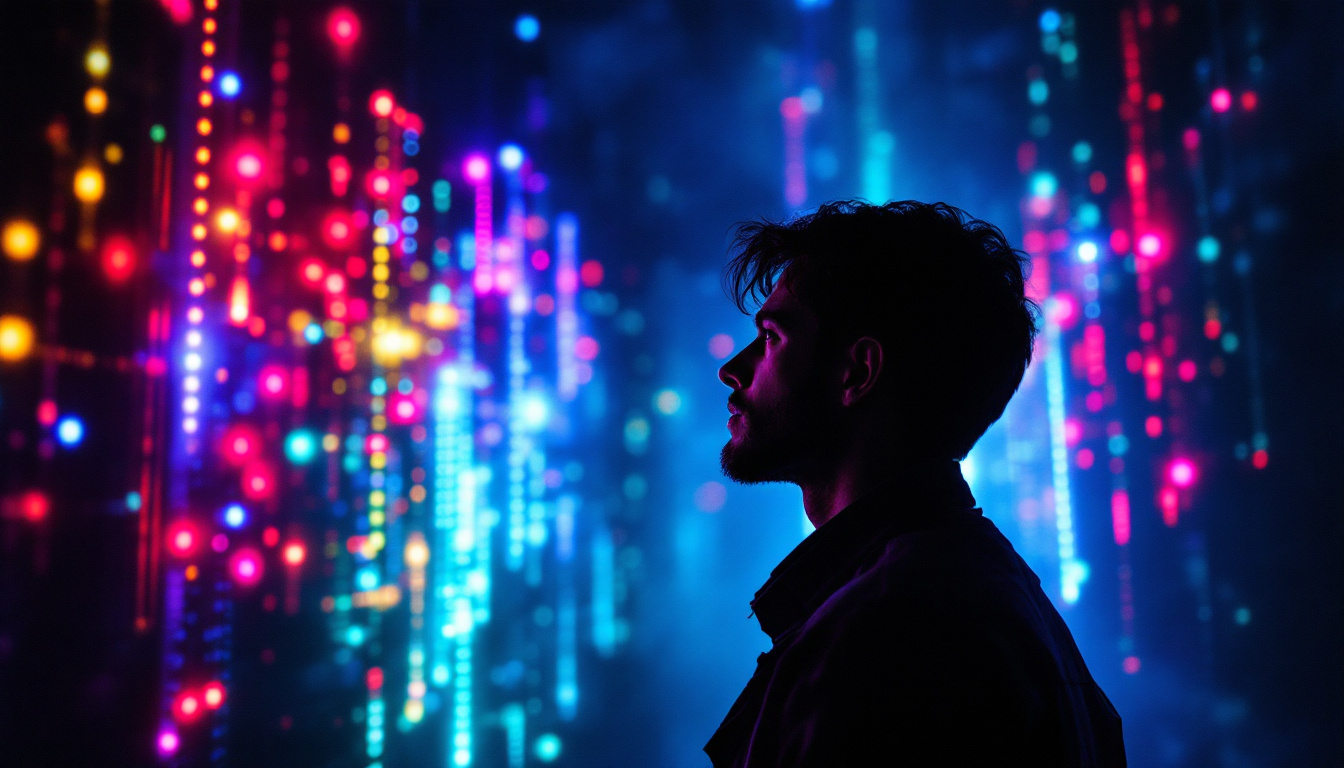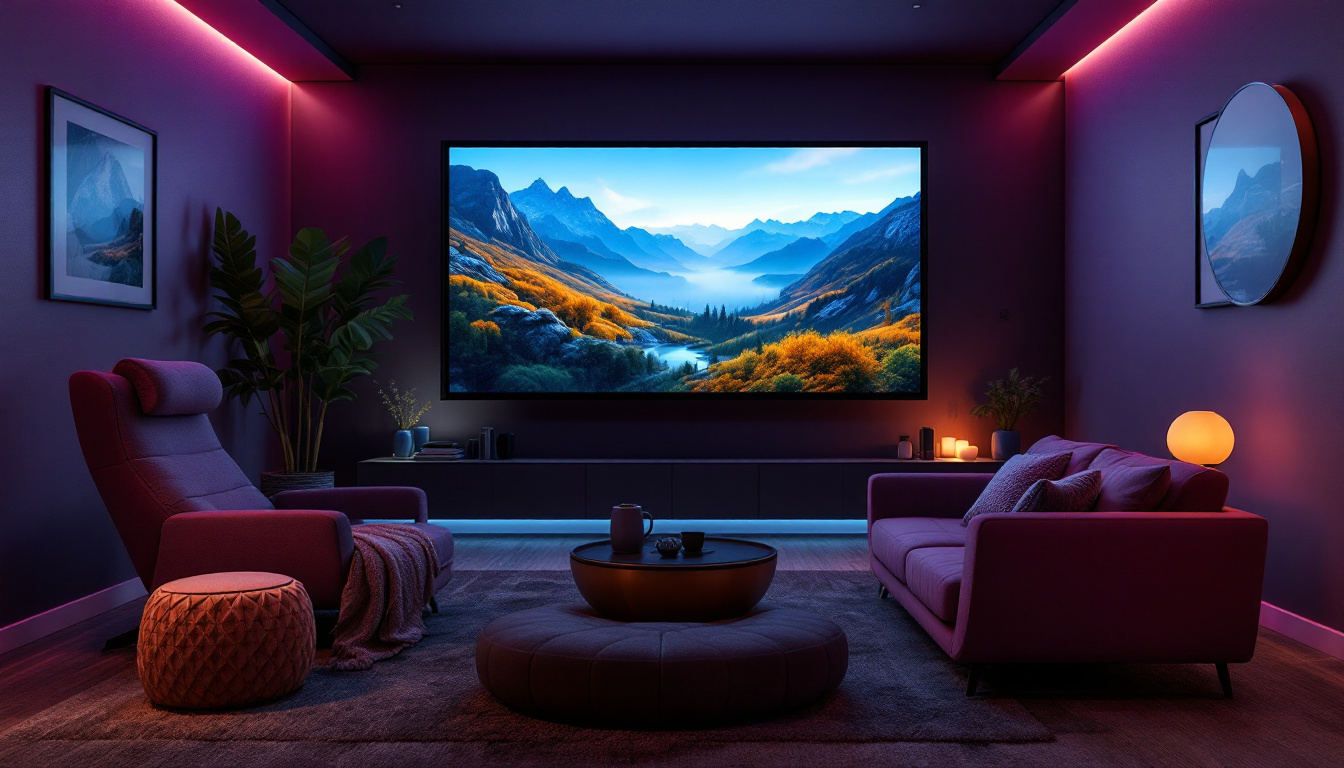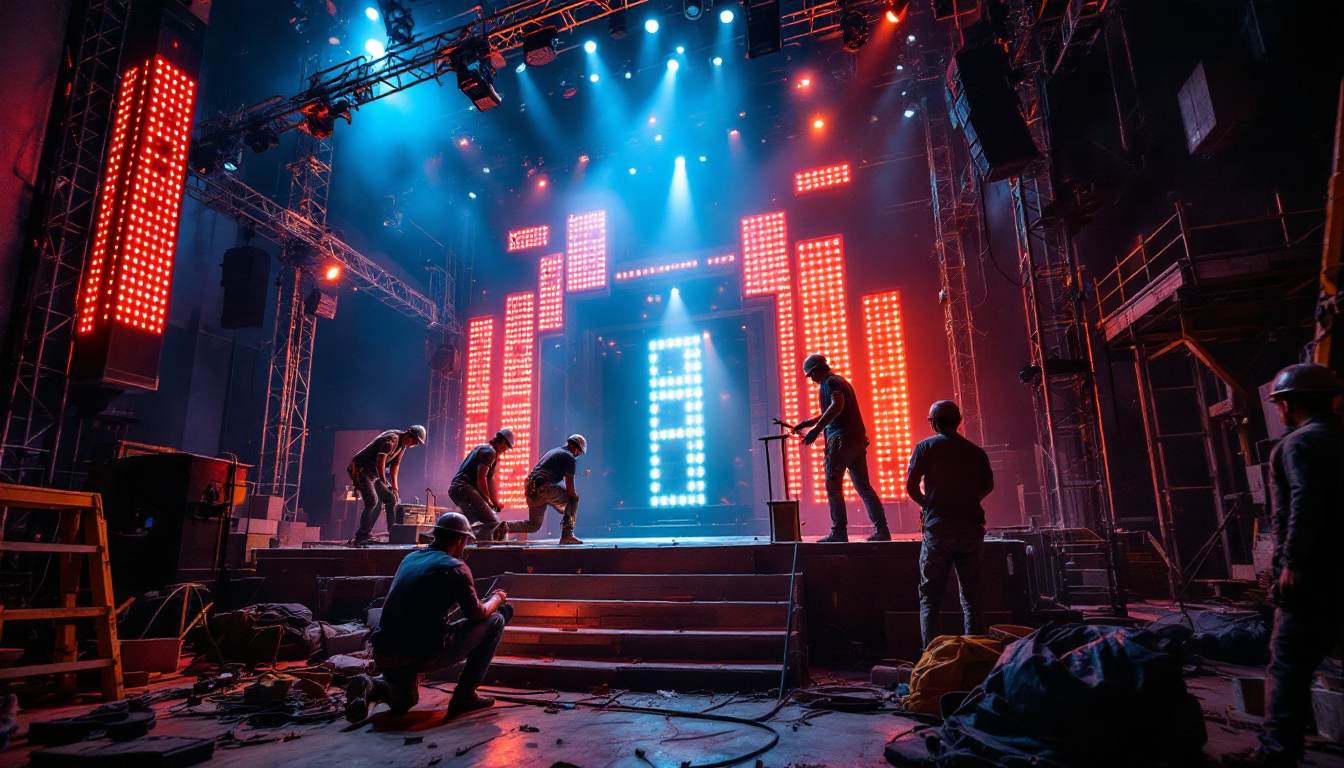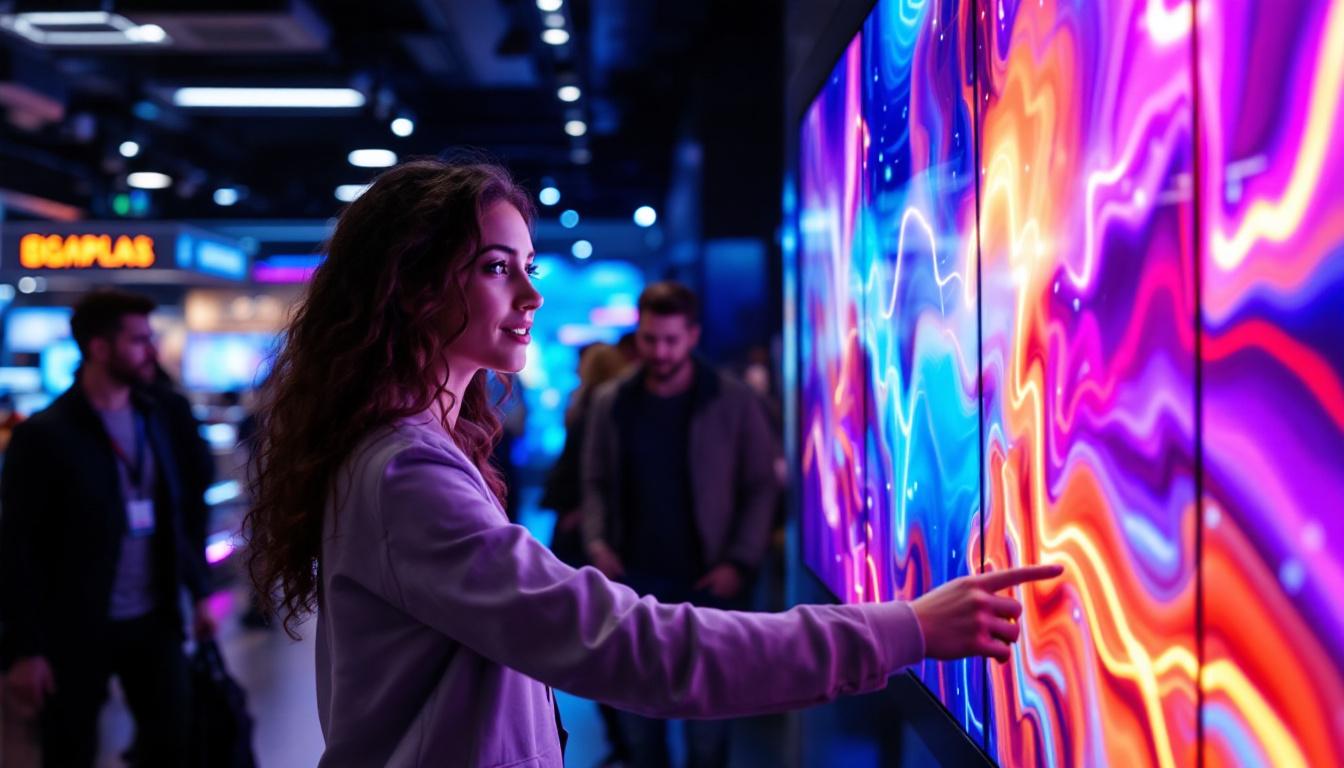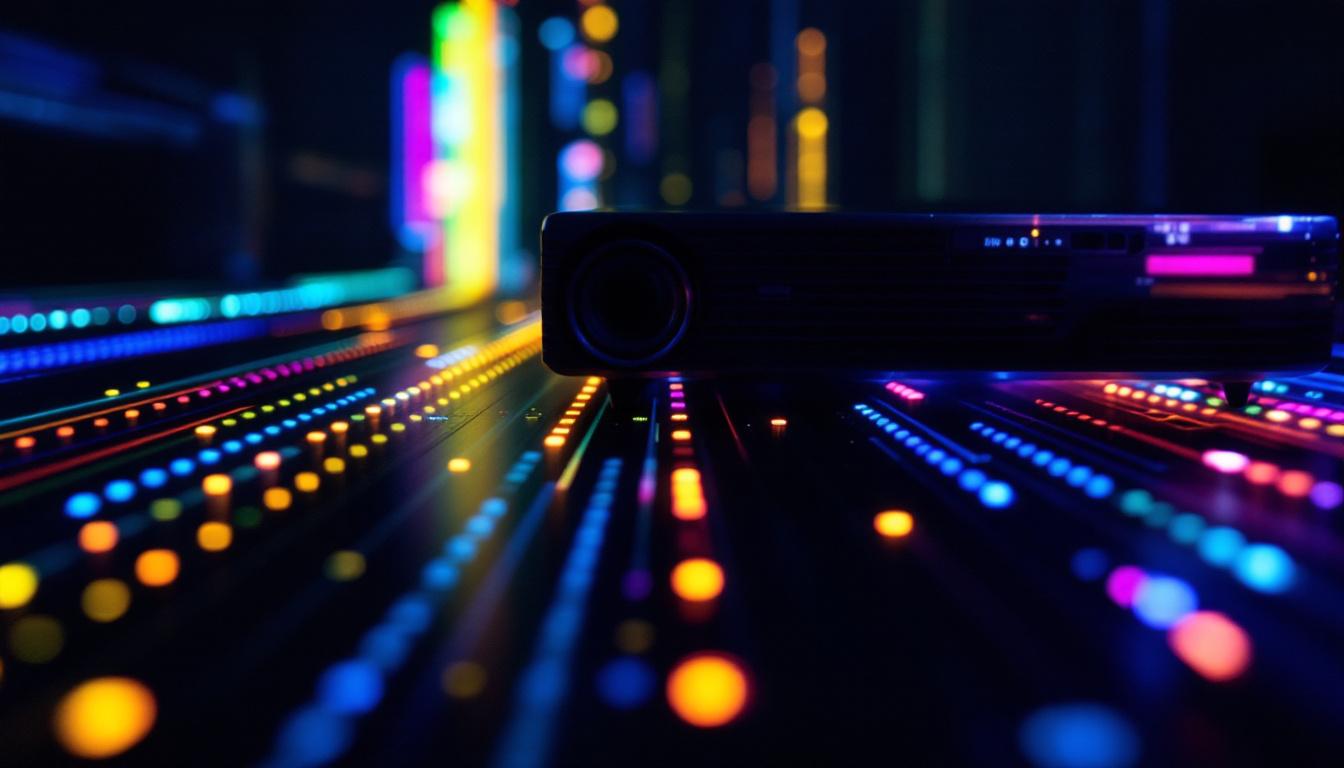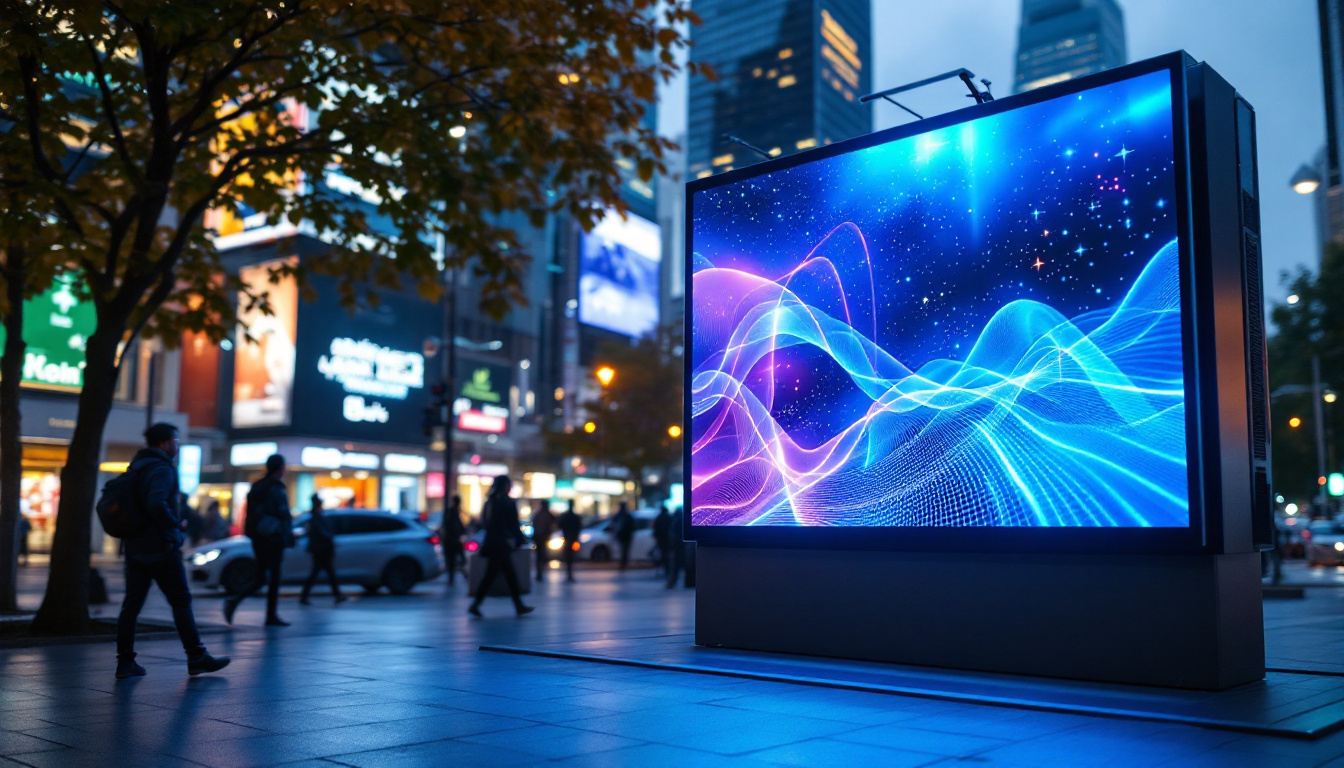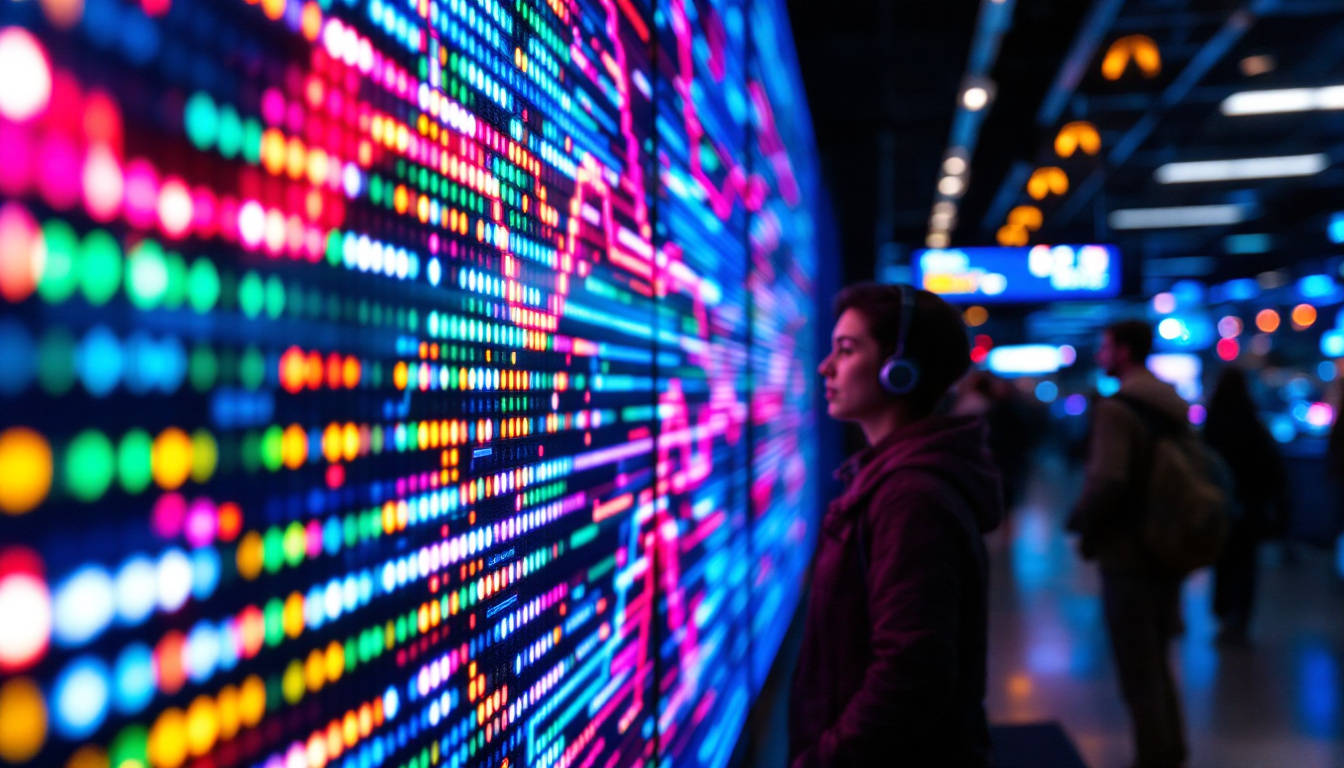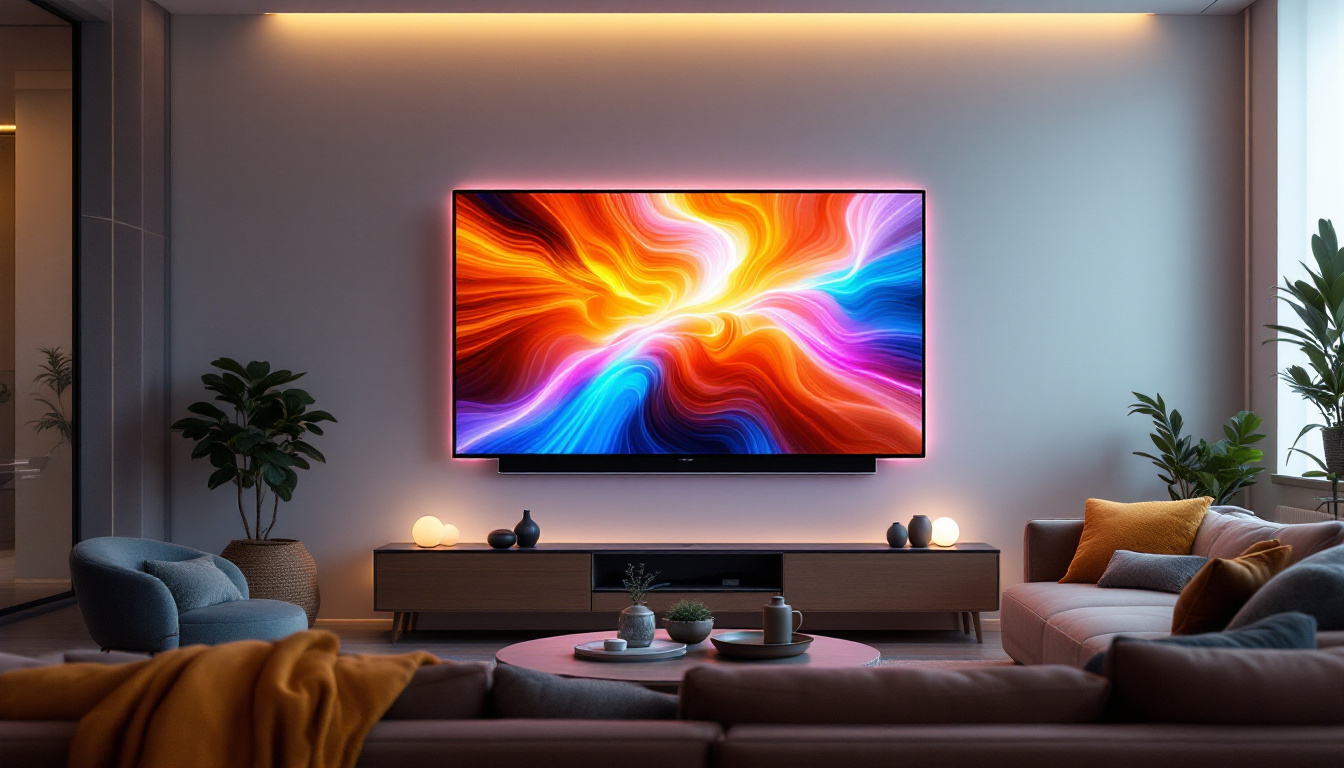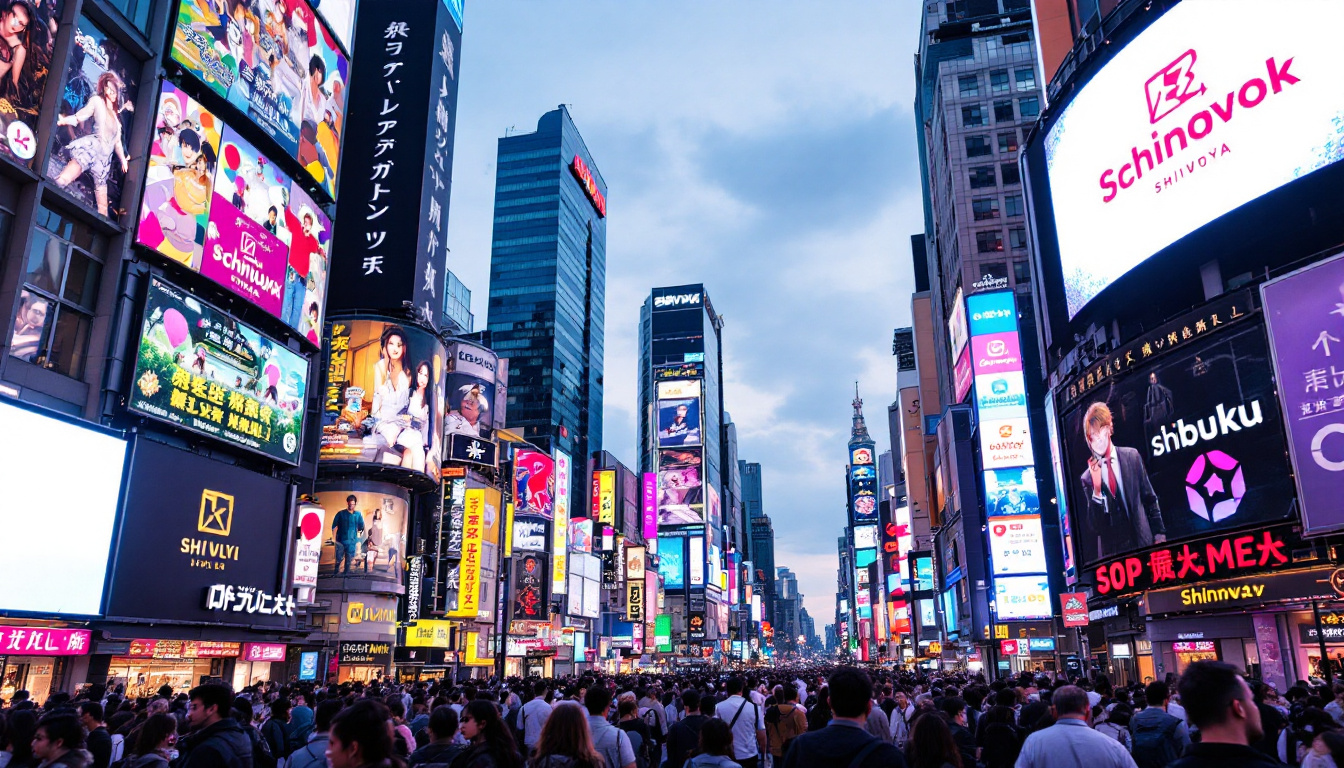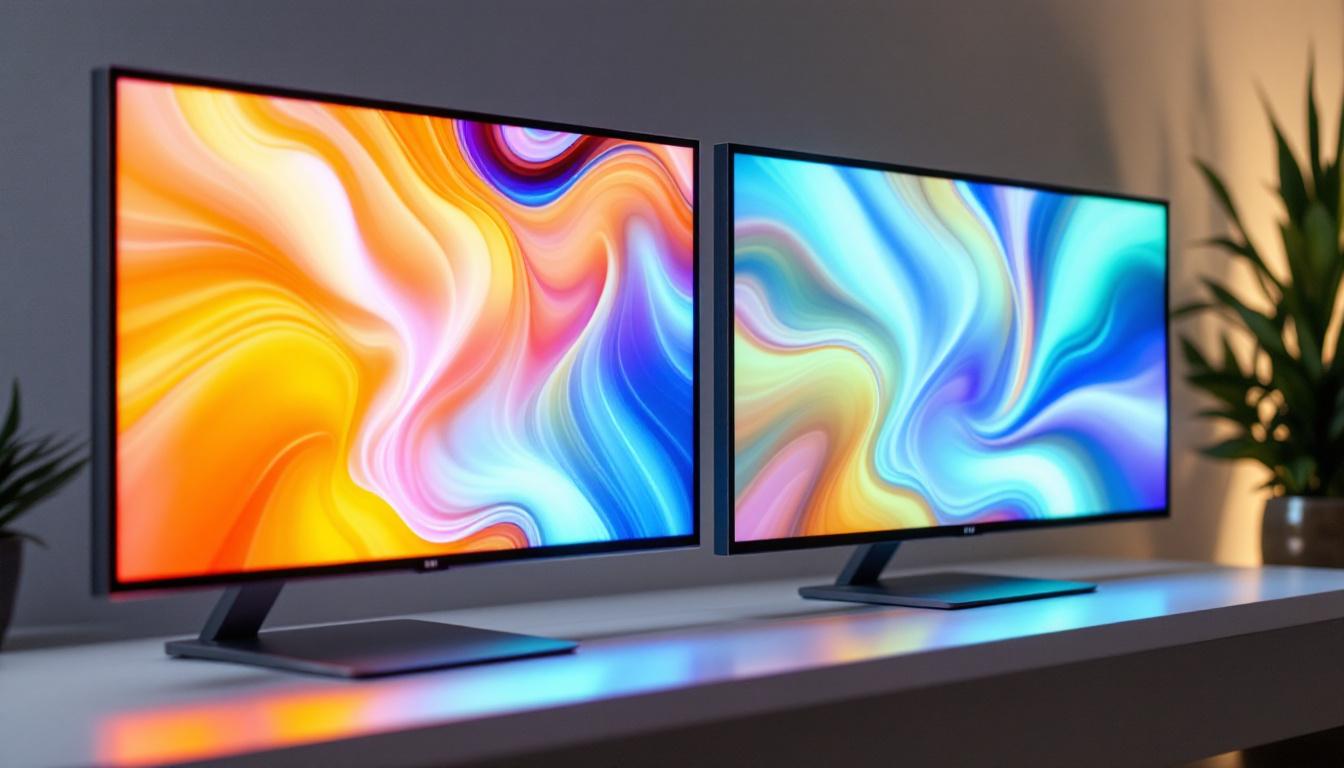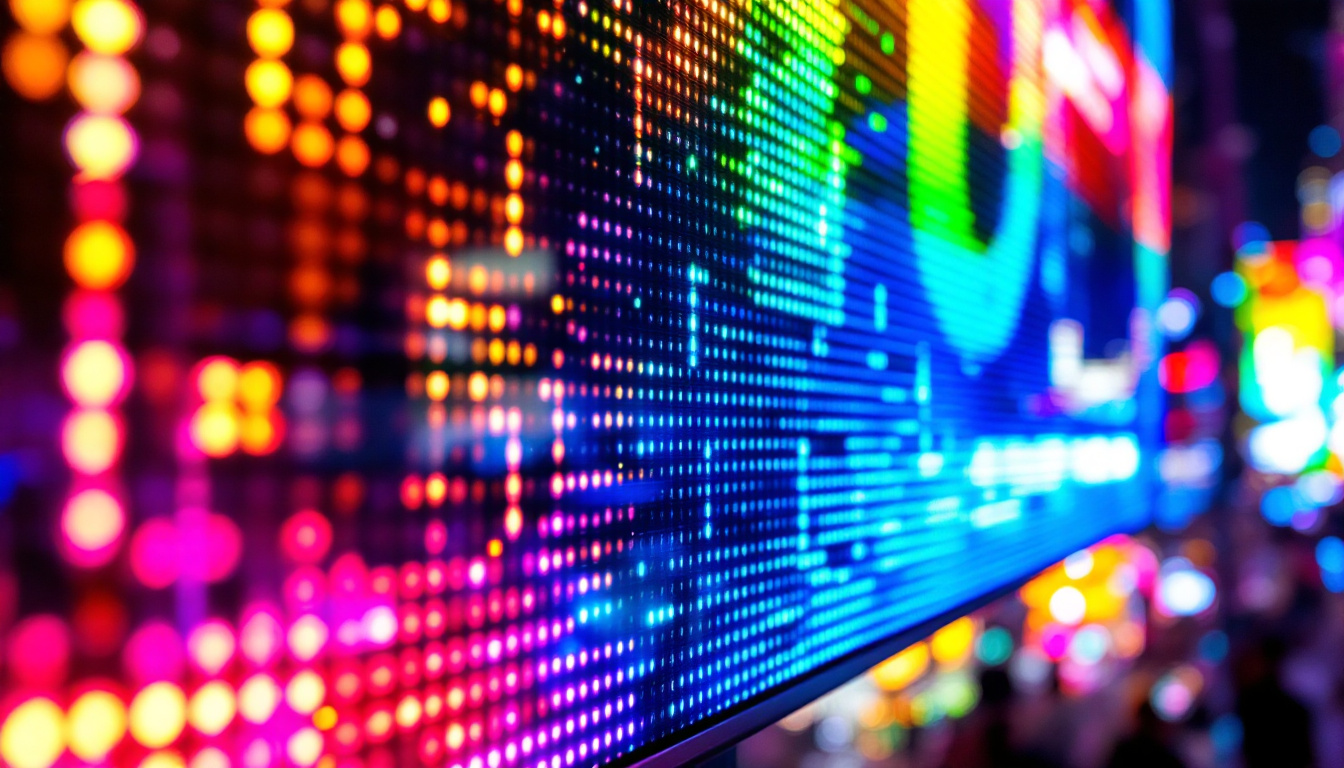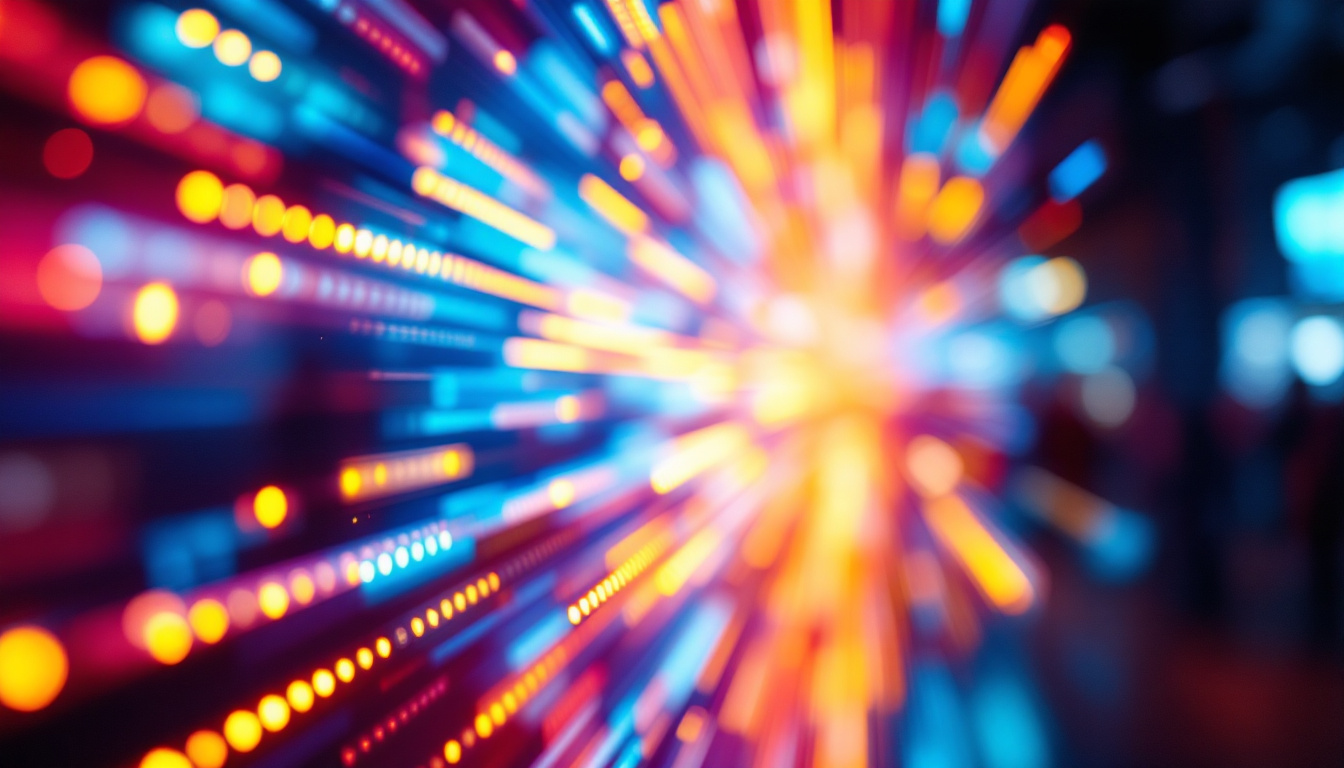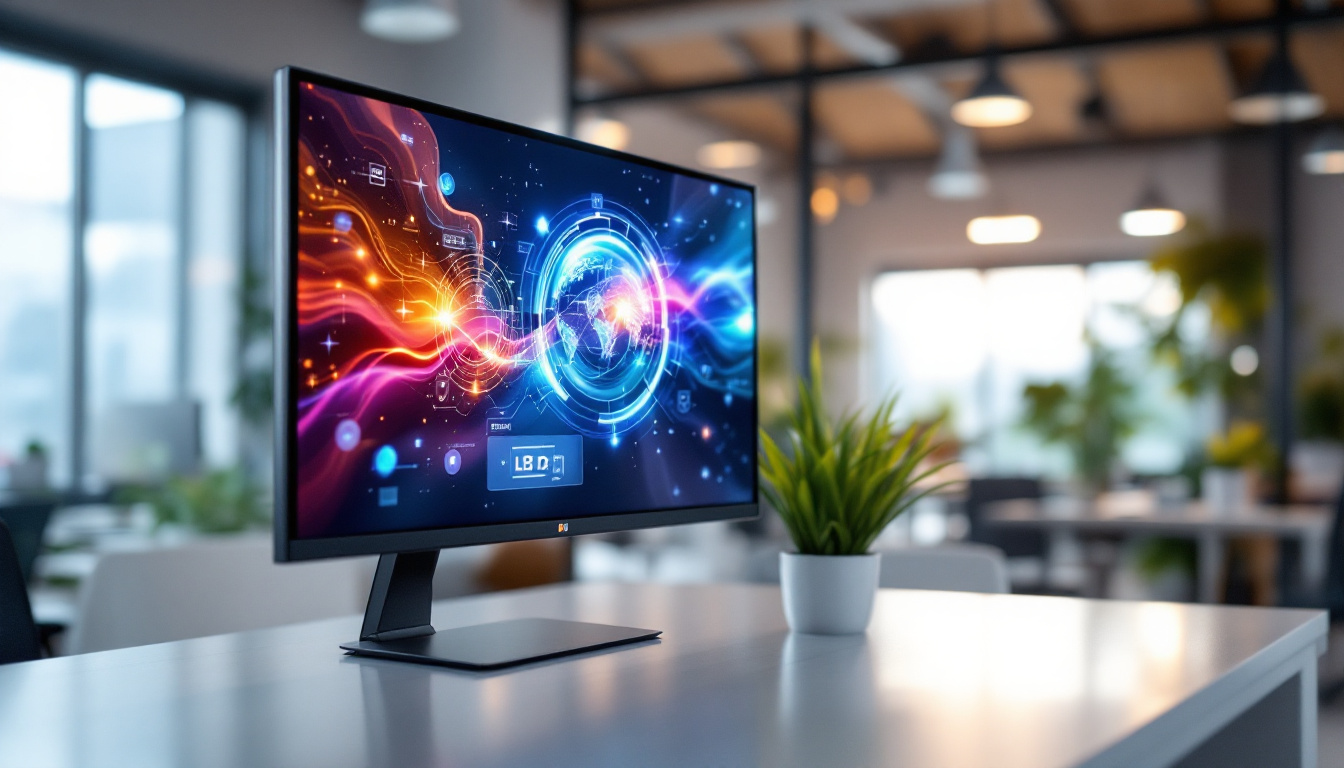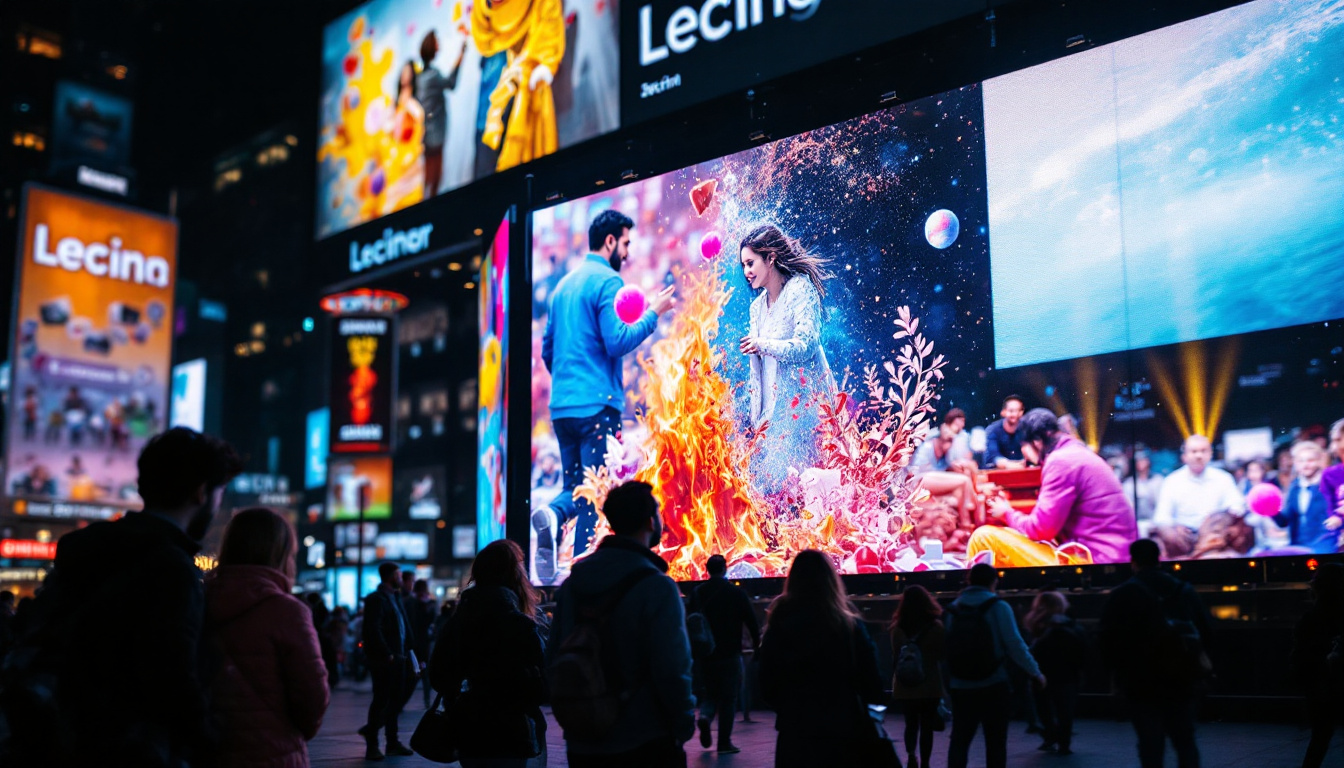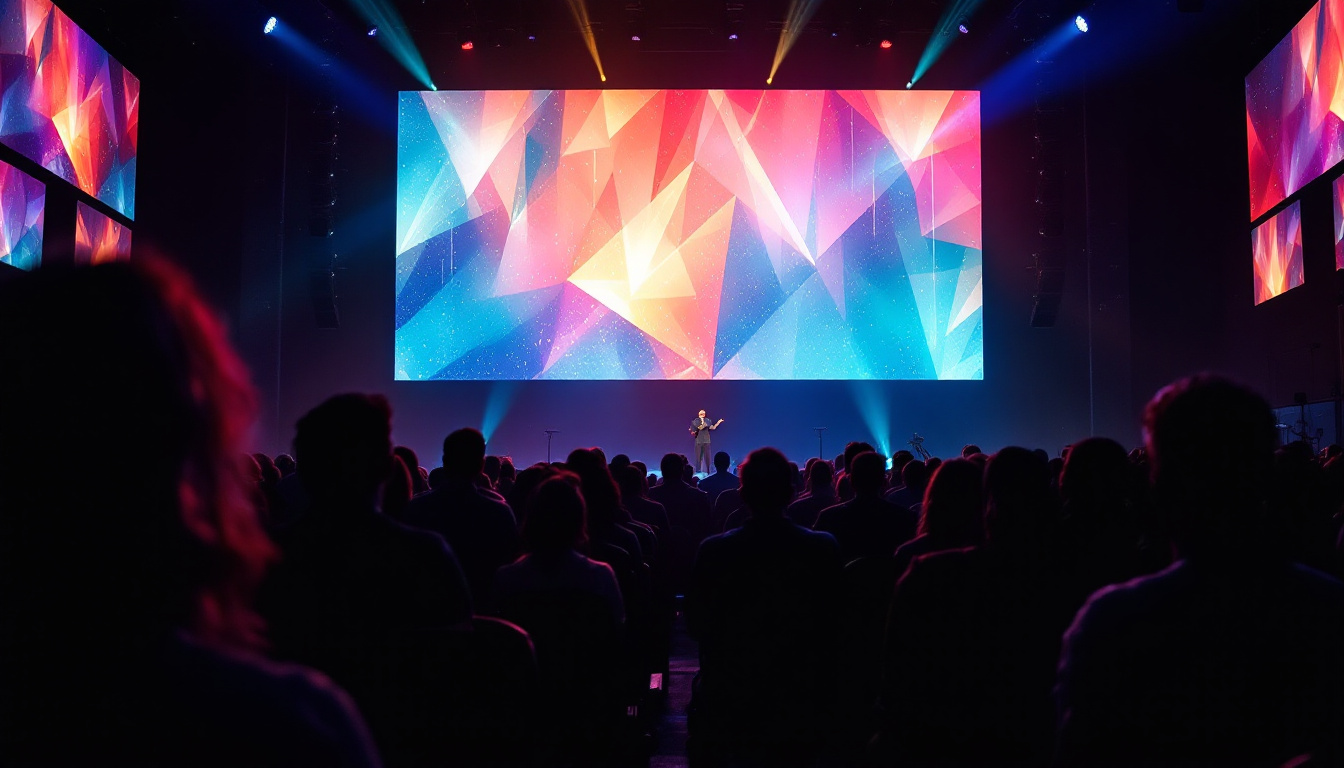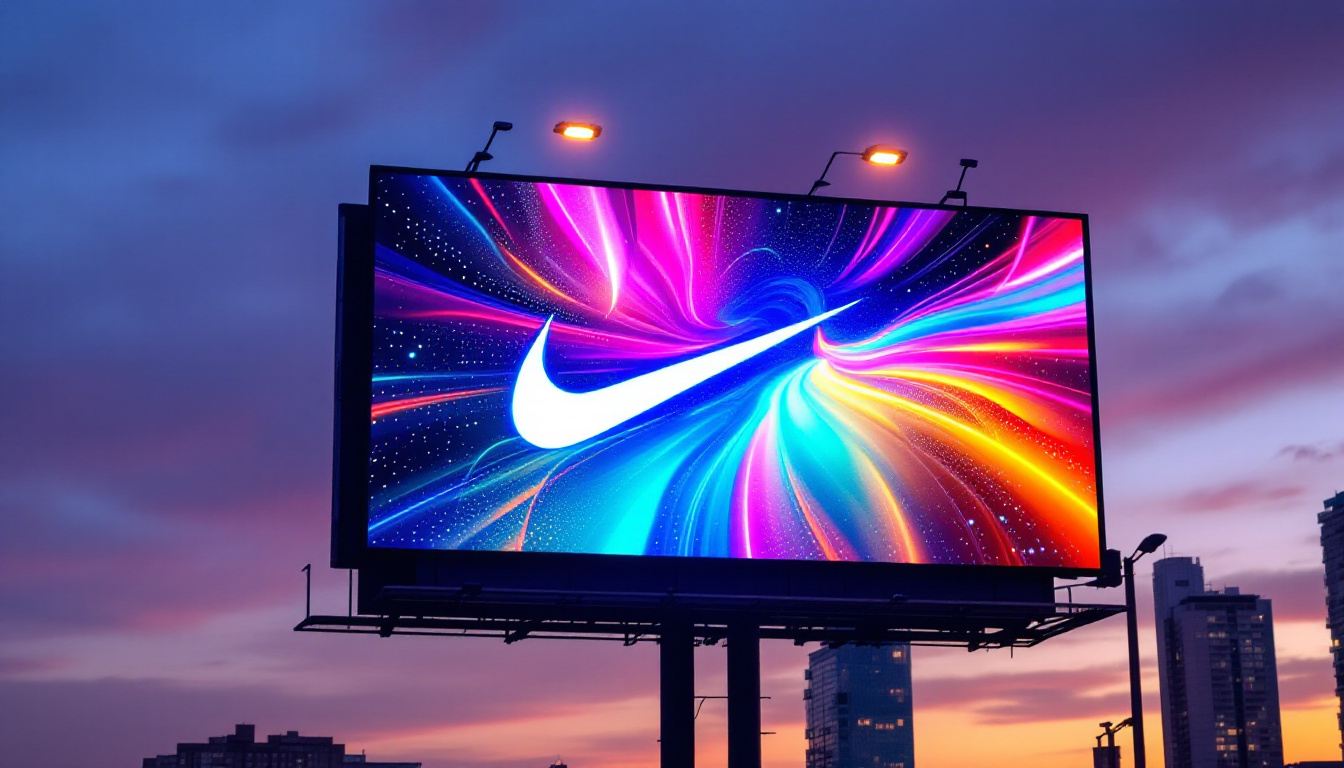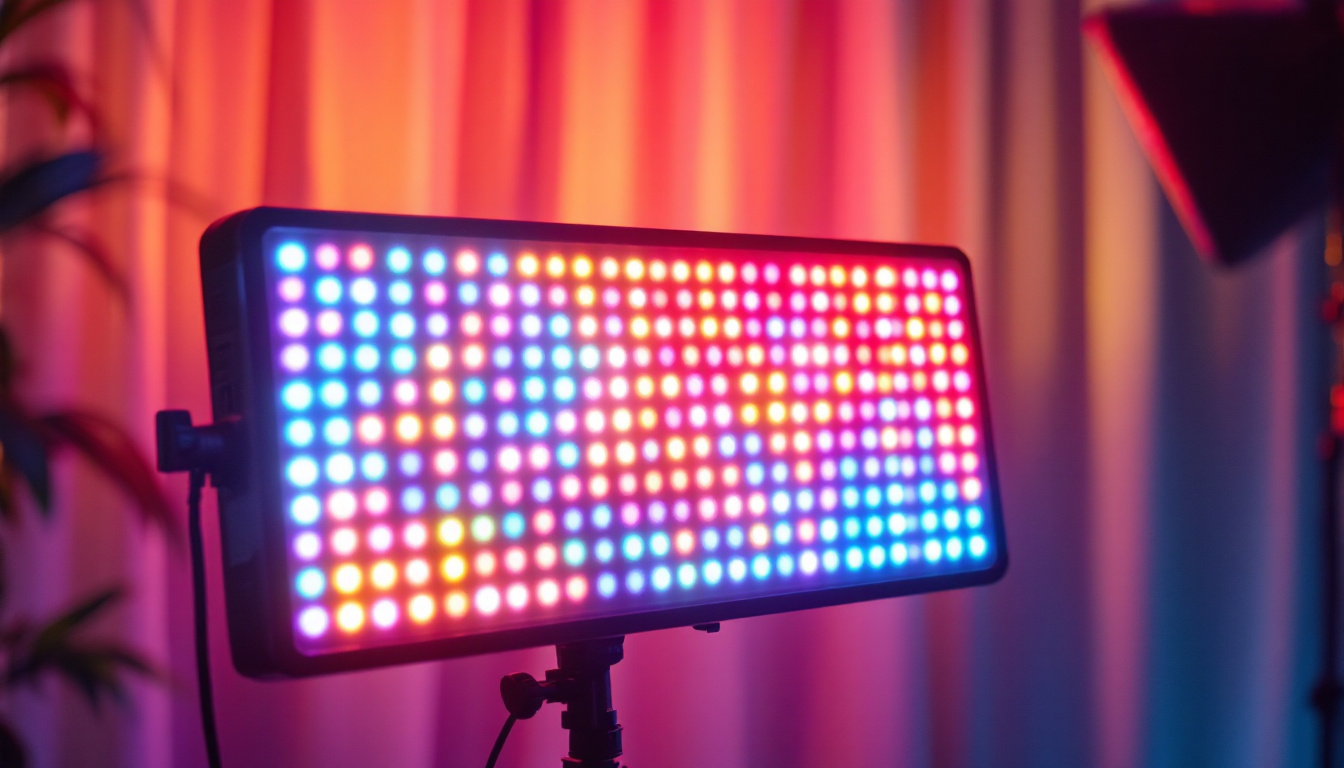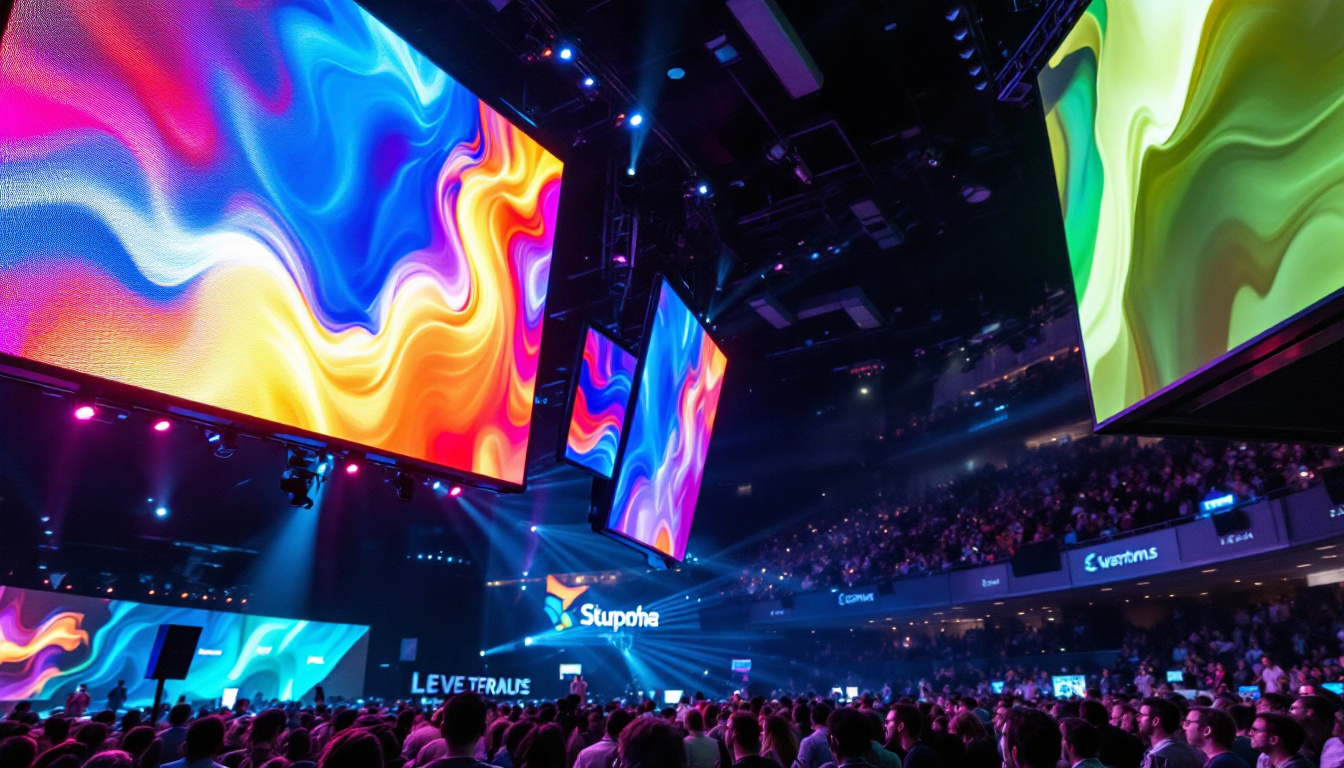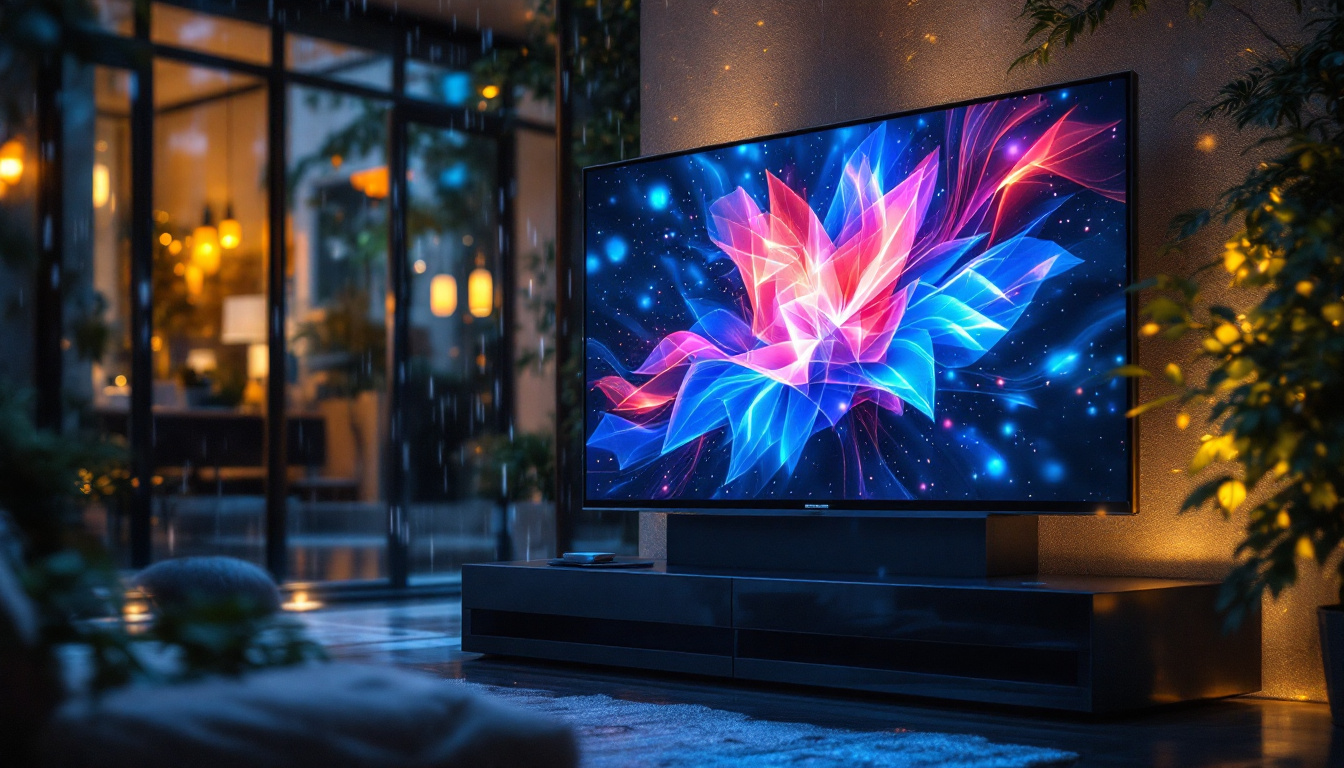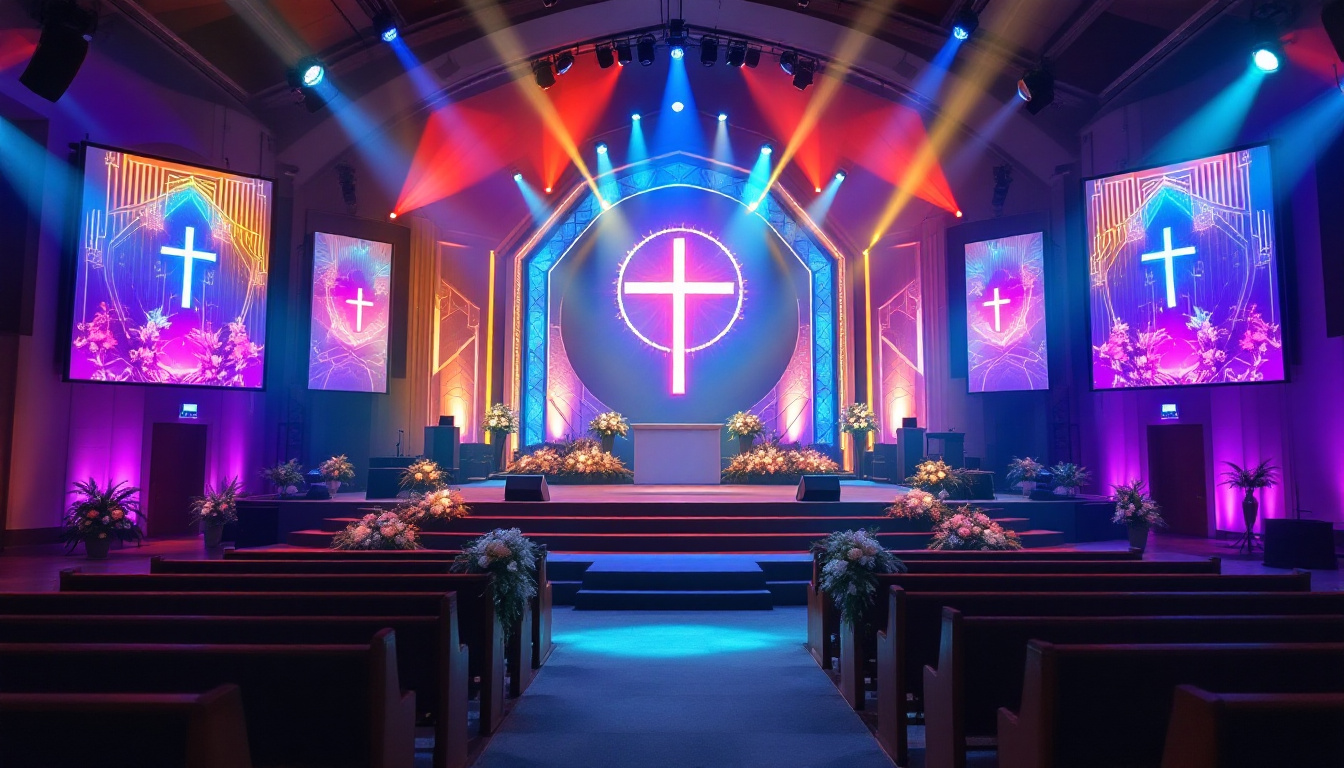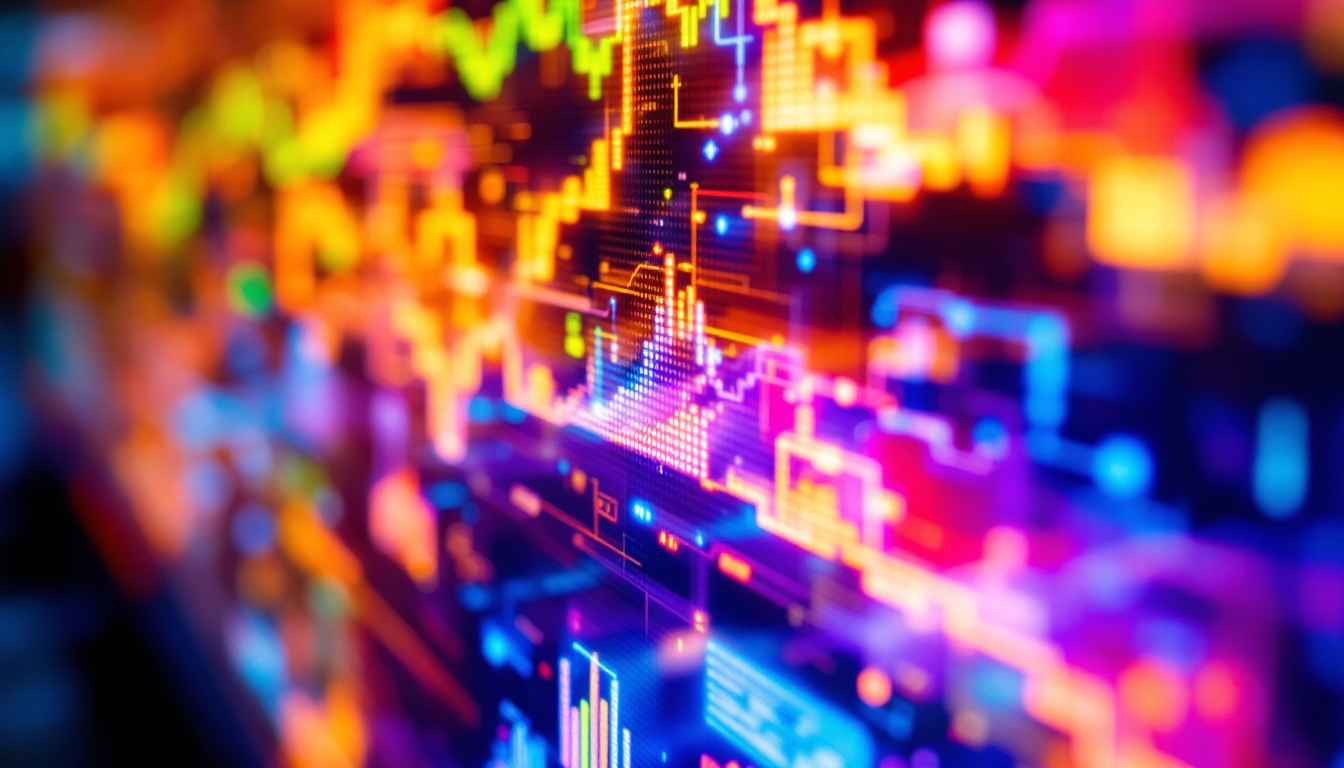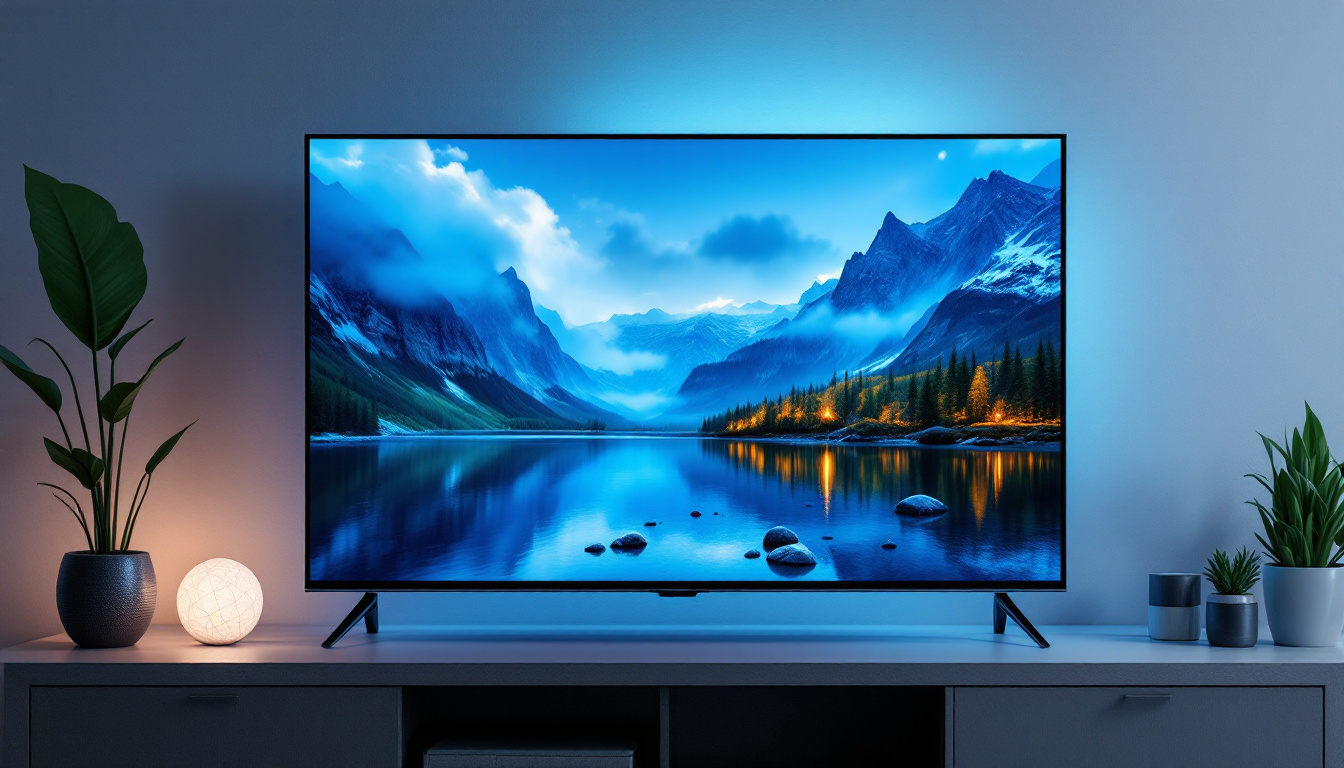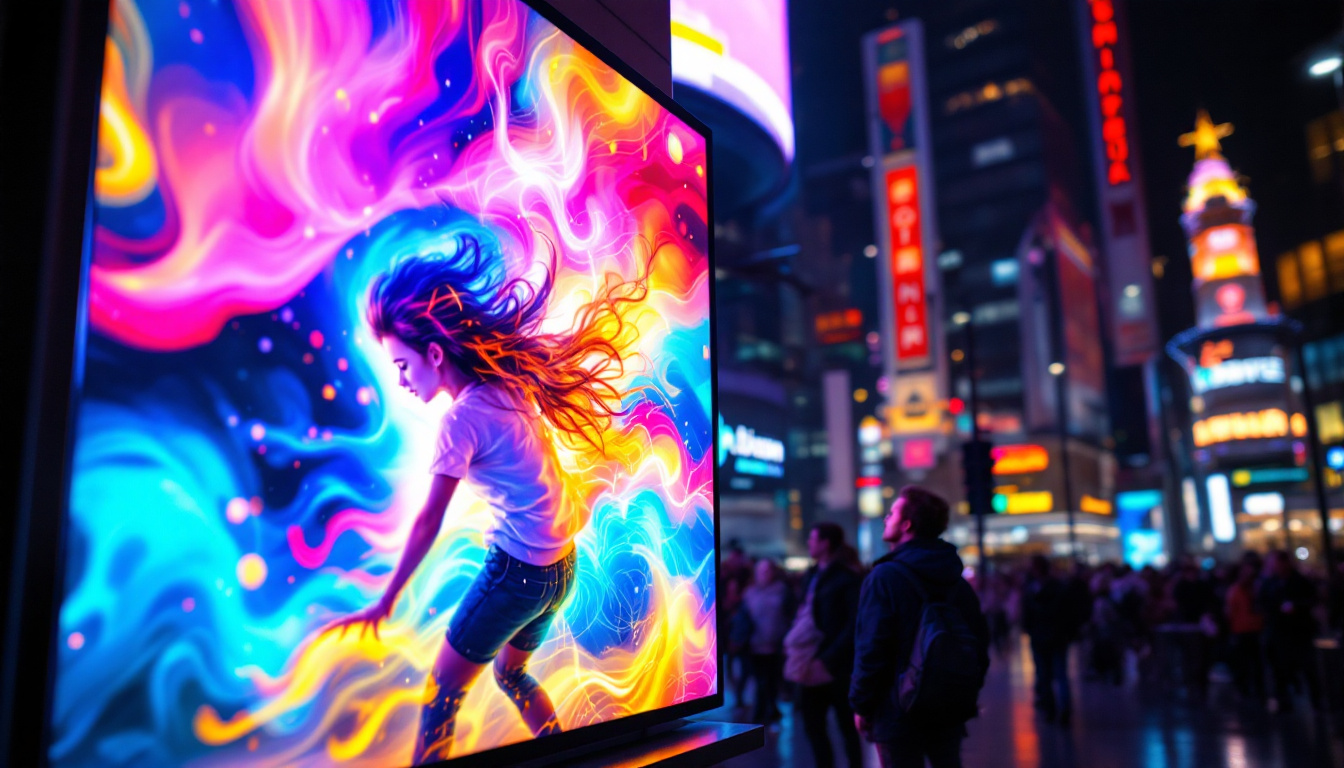In the realm of modern technology, LED displays have become ubiquitous, revolutionizing the way information is presented across various platforms. From advertising billboards to indoor screens in shopping malls, the versatility and efficiency of LED technology have made it a preferred choice for many applications. This article delves into the intricacies of LED displays, the role of manufacturers, and the various types of LED screens available in the market.
Understanding LED Technology
Light Emitting Diodes (LEDs) are semiconductor devices that emit light when an electric current passes through them. This technology has evolved significantly over the years, leading to the development of LED displays that are not only energy-efficient but also capable of producing vibrant colors and high-quality images. The versatility of LEDs has allowed them to penetrate various sectors, from consumer electronics to automotive lighting, showcasing their adaptability and importance in modern technology.
How LED Displays Work
LED displays consist of an array of tiny LED lights that combine to create images and videos. Each pixel in an LED display is made up of red, green, and blue (RGB) diodes. By varying the intensity of each color, a broad spectrum of colors can be produced, allowing for stunning visual displays. The precise control of these RGB components enables the creation of intricate visuals, making LED displays a popular choice for everything from billboards to television screens.
The operation of LED displays can be categorized into two main types: direct view and rear projection. Direct view LED displays are typically used for outdoor signage and large screens, while rear projection displays are more common in indoor settings, where space is limited. Furthermore, advancements in technology have led to the emergence of fine-pitch LED displays, which allow for closer viewing distances without a loss in image quality, making them ideal for high-resolution applications such as control rooms and broadcast studios.
Advantages of LED Displays
One of the primary advantages of LED displays is their energy efficiency. Compared to traditional display technologies, LEDs consume significantly less power, making them an environmentally friendly option. Additionally, LED displays have a longer lifespan, often lasting up to 100,000 hours, which reduces the need for frequent replacements. This longevity not only contributes to lower maintenance costs but also minimizes waste, aligning with sustainable practices in technology.
Another key benefit is their brightness and visibility. LED displays can be easily viewed in various lighting conditions, including direct sunlight, making them ideal for outdoor advertising. Their ability to produce sharp images and vibrant colors enhances the viewer’s experience, whether in a stadium, concert hall, or retail environment. Moreover, the rapid response time of LEDs allows for dynamic content to be displayed seamlessly, which is particularly advantageous for live events and digital signage that require real-time updates. As the demand for high-quality visual experiences continues to grow, LED technology is poised to play an even more central role in our daily lives, transforming how we consume information and entertainment.
Types of LED Displays
LED displays can be categorized into several types based on their application, size, and technology. Understanding these categories is essential for selecting the right display for specific needs.
Indoor vs. Outdoor LED Displays
Indoor LED displays are designed for use in controlled environments such as shopping malls, conference rooms, and theaters. They typically have a higher pixel density, resulting in clearer images at closer viewing distances. Outdoor LED displays, on the other hand, are built to withstand harsh weather conditions and are often used for billboards and large advertising screens. These outdoor displays are equipped with protective features such as waterproofing, UV resistance, and enhanced brightness to ensure visibility even in direct sunlight. The technology behind outdoor displays often includes advanced heat dissipation systems to prevent overheating during prolonged use, making them reliable for continuous operation.
Fixed vs. Rental LED Displays
Fixed LED displays are permanently installed in a specific location, making them suitable for businesses that require constant visibility, such as retail stores or corporate offices. These displays can be customized in size and shape to fit the unique architectural features of a space, providing seamless integration into the environment. Rental LED displays are designed for temporary use, often employed in events, concerts, or exhibitions. These displays are lightweight and easy to assemble, allowing for quick setup and takedown. Additionally, rental displays often come with modular designs, enabling event organizers to create various configurations and sizes to suit different venues and audience sizes, making them incredibly versatile for a range of applications.
Transparent and Curved LED Displays
Transparent LED displays are an innovative solution that allows viewers to see through the screen while still displaying images or videos. This technology is particularly popular in retail environments where brands want to showcase products behind the display. The ability to blend digital content with physical products creates an engaging shopping experience, drawing customers in with dynamic visuals while maintaining product visibility. Curved LED displays, on the other hand, offer a unique viewing experience by bending the screen to create a more immersive environment, often used in cinemas and high-end retail spaces. These displays enhance the viewer’s perception by wrapping visuals around them, creating a sense of depth and engagement that flat screens cannot achieve. The curvature can also help in reducing glare and reflections, ensuring that the content remains vibrant and captivating from multiple angles.
The Role of LED Screen Manufacturers
LED screen manufacturers play a crucial role in the development and production of LED display technology. They are responsible for designing, engineering, and assembling the components that make up these screens.
Key Players in the Industry
The LED display market is filled with various manufacturers, each offering unique products and services. Some companies specialize in high-end displays for professional use, while others focus on cost-effective solutions for small businesses. The competition among manufacturers drives innovation and ensures that consumers have access to the latest technology.
Quality Control and Standards
Quality control is paramount in the manufacturing process of LED displays. Manufacturers must adhere to strict industry standards to ensure that their products meet performance and safety requirements. This includes rigorous testing of components, assembly processes, and final products to guarantee reliability and longevity.
Applications of LED Displays
LED displays have a wide range of applications across various industries. Their adaptability and effectiveness make them suitable for numerous environments.
Advertising and Marketing
One of the most prominent uses of LED displays is in advertising. Businesses leverage the high visibility and dynamic content capabilities of LED screens to attract customers. Digital billboards, storefront displays, and event signage are just a few examples of how companies utilize this technology to enhance their marketing efforts.
Entertainment and Events
In the entertainment industry, LED displays are essential for concerts, festivals, and sporting events. They provide vibrant visuals that enhance the audience’s experience and can be synchronized with audio to create an immersive environment. Additionally, LED screens are commonly used in theaters and cinemas for displaying trailers and promotional content.
Corporate and Educational Use
LED displays are increasingly being adopted in corporate settings for presentations, meetings, and training sessions. Their clarity and brightness make them ideal for conveying information to large audiences. In educational institutions, LED screens are used in classrooms to facilitate interactive learning and enhance student engagement.
Future Trends in LED Display Technology
The LED display industry is continuously evolving, with advancements in technology paving the way for innovative applications and improved performance. Several trends are shaping the future of LED displays.
Advancements in Resolution and Pixel Density
As technology progresses, manufacturers are developing LED displays with higher resolutions and pixel densities. This allows for sharper images and more detailed visuals, which is particularly important for applications requiring close viewing, such as in retail or control rooms.
Integration with Smart Technology
The integration of LED displays with smart technology is becoming increasingly common. This includes features such as remote management, real-time content updates, and interactive capabilities. Smart LED displays can be controlled via mobile apps or centralized systems, providing users with greater flexibility and convenience.
Sustainability Initiatives
With growing concerns about environmental impact, many LED manufacturers are focusing on sustainability. This includes using eco-friendly materials, improving energy efficiency, and implementing recycling programs for old displays. The shift towards sustainable practices is not only beneficial for the environment but also appeals to consumers who prioritize eco-conscious brands.
Choosing the Right LED Display Manufacturer
Selecting the right LED display manufacturer is crucial for ensuring quality and reliability. Several factors should be considered when making this decision.
Experience and Reputation
It’s essential to choose a manufacturer with a proven track record in the industry. Researching their experience, customer reviews, and case studies can provide valuable insights into their capabilities and reliability. A reputable manufacturer is more likely to deliver high-quality products that meet specific needs.
Customization Options
Different applications may require unique specifications, so it’s important to find a manufacturer that offers customization options. This includes flexibility in size, resolution, and features. A manufacturer that can tailor their products to meet specific requirements will be more valuable in the long run.
After-Sales Support and Warranty
After-sales support is a critical aspect of the purchasing process. A manufacturer that offers robust customer service, technical support, and warranty options can provide peace of mind. This ensures that any issues that arise post-purchase can be addressed promptly and effectively.
Conclusion
LED displays are an integral part of modern communication and marketing strategies, offering unparalleled visibility and versatility. As technology continues to advance, the role of LED screen manufacturers will remain vital in shaping the future of visual displays. By understanding the various types of LED displays, their applications, and the factors to consider when choosing a manufacturer, businesses can make informed decisions that enhance their visibility and engagement with audiences.
In this rapidly evolving landscape, staying updated with the latest trends and innovations in LED technology will be essential for businesses looking to leverage these powerful tools effectively. Whether for advertising, entertainment, or corporate use, LED displays are set to play a pivotal role in how information is conveyed in the years to come.
Discover Cutting-Edge LED Displays with LumenMatrix
Ready to elevate your visual communication strategy with the latest in LED display technology? Look no further than LumenMatrix, a leader in innovative LED solutions. From captivating Indoor LED Wall Displays to dynamic Outdoor LED Wall Displays, and specialized options like Vehicle LED Displays and LED Sports Displays, LumenMatrix has the perfect solution to enhance your brand’s visibility. Experience the future of digital signage with our Custom LED Displays, All-in-One LED Displays, and LED Transparent Displays. Don’t miss the opportunity to create unforgettable visual experiences. Check out LumenMatrix LED Display Solutions today and see your message come to life with clarity and impact.

